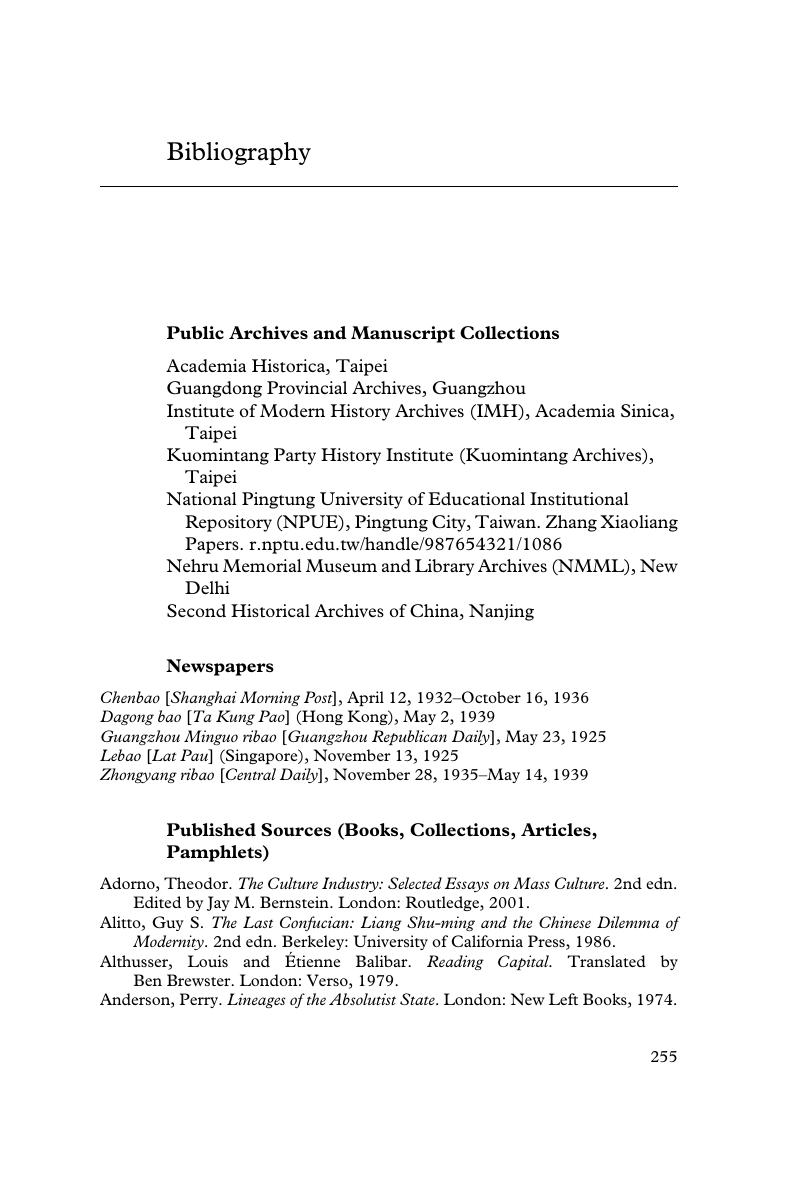Book contents
- China’s Conservative Revolution
- Studies of the Weatherhead East Asian Institute, Columbia University
- China’s Conservative Revolution
- Copyright page
- Contents
- Figures
- Acknowledgments
- A Note on Romanization
- 1 Introduction
- 2 Orthodoxy
- 3 The Masses
- 4 State Comes First
- 5 Convergence
- 6 World Revolution
- Epilogue
- Glossary of Selected Romanized Terms
- Bibliography
- Index
- Studies of the Weatherhead East Asian Institute Columbia University
- References
Bibliography
Published online by Cambridge University Press: 12 April 2018
- China’s Conservative Revolution
- Studies of the Weatherhead East Asian Institute, Columbia University
- China’s Conservative Revolution
- Copyright page
- Contents
- Figures
- Acknowledgments
- A Note on Romanization
- 1 Introduction
- 2 Orthodoxy
- 3 The Masses
- 4 State Comes First
- 5 Convergence
- 6 World Revolution
- Epilogue
- Glossary of Selected Romanized Terms
- Bibliography
- Index
- Studies of the Weatherhead East Asian Institute Columbia University
- References
Summary

- Type
- Chapter
- Information
- China's Conservative RevolutionThe Quest for a New Order, 1927–1949, pp. 255 - 274Publisher: Cambridge University PressPrint publication year: 2018

